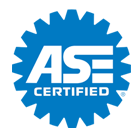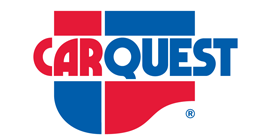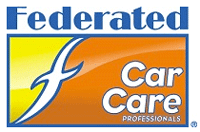Oil Times are a-Changin' (Oil Change Synthetic)
Posted October 30, 2022 10:49 AMWhen it comes to oil changes, things are really changing. Most newer vehicles require synthetic oil, and while it costs more than conventional oil, it doesn't need to be changed as often.
When conventional oil was the only game in town, you changed your oil every 3,000 miles/5,000 km. But as technology in newer vehicles has rapidly changed, so has oil technology. Synthetics have been around since the seventies. Even though they start with a conventional oil base, they are engineered in a chemical processing plant with properties that allow them to keep your engine lubricated at very high temperatures. They are more uniform and consistent.
Synthetic oil doesn't break down as easily, so it lasts longer than conventional oil. And synthetic oil can flow more easily, even in extremely low temperatures. As you can see, it has performance advantages at both temperature extremes.
Generally, in recent years automakers have been shipping most of their vehicles with either synthetic oil or a synthetic blend. Blends are cheaper and have many of the advantages of synthetics. Another reason synthetic oil is being used in many newer vehicles is its ability to flow more easily improves efficiency.
It's important to follow your vehicle manufacturer's recommendations when you have your oil changed, so our service adviser can see what options you have for your vehicle. Many newer vehicles come with specific recommendations for synthetic oil. If you live in an area with wide temperature extremes or do a lot of stop-and-go driving, synthetic oil can offer advantages.
Older vehicles can do fine with conventional oil, but it will have to be changed more than synthetic oil. Also, if you have an older vehicle with more than 75,000 miles/120,000 km on it, it can be more prone to leak and burn oil. Some synthetic oils are designed to protect those high-mileage vehicles better than conventional oil, and yours may benefit. See what your service adviser thinks.
All Things Automotive & Diesel Service
1997 Walton Ave #C
Idaho Falls, ID 83401
208-523-3903
More than Pads and Rotors (Brake Caliper Replacement)
Posted October 23, 2022 7:45 AMYou might be familiar with brake pads and rotors, two components of your vehicle's brakes that have to be regularly serviced. Here's another important component of your brakes: the calipers.
Calipers are used in disc brakes, the type of brakes now found in most recently manufactured vehicles. A caliper is the part of the brakes that squeezes the brake pads against the discs, or rotors, which turn with your wheels.
There are different kinds of calipers, but the basic principle is the same. You press down the pedal, brake fluid activates a piston or pistons that squeeze the brake pads against the disc and the friction slows down your vehicle.
While modern vehicles have a warning system to let you know it's time to get your brakes checked, your brake light usually goes on when your fluid level is low or your fluid pressure is low. But you may have to look out for signals your calipers are the problem.
If your vehicle pulls to one side when you brake, that could be a sign that one caliper isn't working right. If you smell a burning odor coming from a wheel after a trip, there might be too much pressure from a caliper. Grinding or squealing when you brake is another signal that it may be time to bring in your vehicle so we can check your brakes.
One way to minimize brake issues is regular inspection. Have them periodically looked at when you bring in your vehicle for an oil change. The good news is brake issues are more likely to be caused by pads or rotors wearing out. Calipers last a lot longer, but even they will need replacing every so often.
All Things Automotive & Diesel Service
1997 Walton Ave #C
Idaho Falls, ID 83401
208-523-3903
Breathe Easier (Cabin Air Filter)
Posted October 16, 2022 7:47 AMWhen you get in your vehicle, how does it smell? If it's not so nice, it may be time to have your cabin air filter changed.
It's not the same one that filters out the air used in the engine. The cabin air filter screens out dust and other particulates from the outside air so when it enters the cabin, you don't have to breathe them in when you're driving. Maybe your commute finds you traveling along dusty rural roads, or maybe you pass by some city factories that have smokestacks spewing out smoky exhausts. Or in spring, maybe you notice your allergies acting up because of the pollen in the air. The cabin air filter will remove a lot of those things.
The more it filters out, the more those small particles add up. That reduces how much airflow the heating/air conditioning system can handle, and you may notice not as much air is coming through your vehicle's vents. That can also be a sign you need your air filter replaced.
Our technicians will remove and inspect the air filter; it's usually located around the glove compartment, under the dash or sometimes in the engine compartment. If you wish, your service advisor can show you what condition yours is in; if it needs replacing, you'll be able to see the dirt, bugs, leaves and other crud that accumulates after several months of driving.
Each vehicle's manufacturer recommends an interval after which your cabin air filter should be replaced. Depending on how much and where you drive, you might find yourself needing a replacement more or less often than the manual suggests.
Just like you clean your furnace filters periodically, it's wise to do the same with your vehicle. After you do, you'll find you might just breathe easier!
All Things Automotive & Diesel Service
1997 Walton Ave #C
Idaho Falls, ID 83401
208-523-3903
Giving CV Joints the Boot! (CV Joint and Boot Replacement)
Posted October 9, 2022 11:45 AMEver wonder how your vehicle’s transmission is connected to your wheels? After all, when you hit a pothole or some other uneven part of a road’s surface, there has to be something that can maintain the connection between the transmission and the wheel yet keep everything moving at the same speed.
That very cool device is called a CV joint, a kind of driveshaft running to each wheel. The CV stands for constant velocity because it keeps the drive wheels moving at a constant speed (velocity). They’re used mostly on front-wheel drive vehicles but also in rear-wheel and all-wheel drive vehicles.
The joints move up and down and adjust to bumpy surfaces. Plus, they are covered in a rubber boot which protects them from road debris and also holds lubrication in. There’s a CV joint and boot on the transmission side and one on the wheel side. Unfortunately, the spot that usually fails first is that rubber protective cover (the boot). After a lot of wear, tear, bumps, road hazards, heat, and you name it, the rubber rips and the lubrication leaks out. At that point, it must be replaced.
Here are signs to tell if your CV joint is bad.
- Your vehicle is pulling to one side as a wheel loses power or you feel a vibration while driving.
- You see grease on the inside or edge of your tires.
- Your front tires won’t point in the same direction.
- You hear grinding or clicking when you turn.
Sometimes if a broken boot early is caught early, a technician can pack in new grease and replace just the boot. But if the lubrication has leaked out and the joint is already wearing badly, the CV and boot both have to be replaced. Give your vehicle the boot (as in a new boot) and CV joint, and you’ll be back on the road to your next destination.
All Things Automotive & Diesel Service
1997 Walton Ave #C
Idaho Falls, ID 83401
208-523-3903
Light Up your Life (Headlamp Replacement)
Posted October 2, 2022 7:43 AMDid you know that having a burned out headlight can result in your rearview mirror reflecting some flashing lights? In other words, you might get pulled over by the police for only having one working headlight, because in most places it's against the law.
Not only is it illegal to drive with one headlight burned out, but it's also dangerous. You can't see down the road nearly as well at night with only one headlight, and other drivers can't see you as easily either.
The good news is many newer vehicles warn you when one of your headlamps burns out. When that happens, have it taken care of as soon as you can. While there was a time when all headlamps were pretty much the same, the same isn't true these days. There are halogen, Xenon, LED and other technologies used in modern vehicles. Plus there are sealed beams (like those on older vehicles) and capsules.
If you have a burned out headlamp, ask your service advisor for recommendations. Usually when one side goes, the other isn’t far behind. Many suggest replacing both headlamps at the same time. Your vehicle's owner's manual can tell you what the manufacturer recommends. You also can ask your service advisor about upgrading to a headlight that might give you better visibility.
In order to make sure you're able to see down the road the way your vehicle was designed and not blind oncoming drivers, it's vital that new headlights be aimed properly. That's another good reason to have this service performed by a technician. Now, that's a really bright idea.
All Things Automotive & Diesel Service
1997 Walton Ave #C
Idaho Falls, ID 83401
208-523-3903















